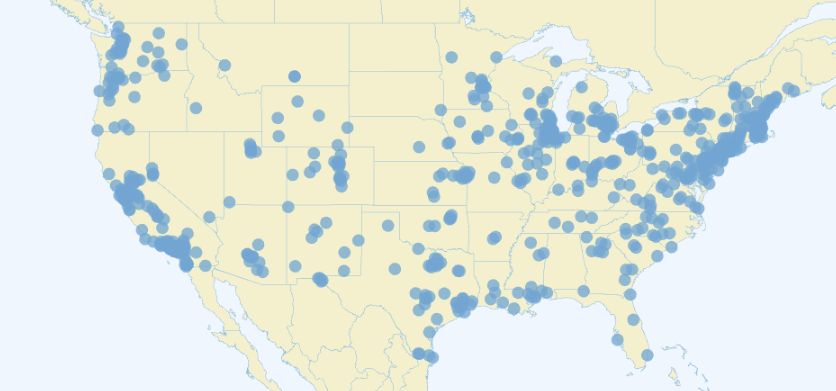1. Burbio's State-Level Funding Tracker features continuously updated, state-specific grants for PreK-12 schools. Burbio has identified over 1,000 grants covering over $30 billion in spending. The data is updated daily and covers grant category, application deadlines, district eligibility, and funding start and end dates. We also provide links to the list of districts awarded grants when they are posted by the states.
As a general rule clients prefer to "get ahead" of grants being awarded to districts. When grants are announced they receive an alert, and can then reach out to eligible districts to make them aware of the grant and offer assistance in advance of the application process. That said, there is value in the 'Districts Awarded' information, which posts after the grants have been awarded. This week we share some observations:
- Recurring grants: Reviewing and analyzing award winners from previous years offers a preview into the upcoming year as the grant will be available to districts once again. In one example, winners of the recently announced Small School Modernization Grant in Washington were posted last year and provide insight into potential awardees in the coming year.
- Pilot programs with Follow-On Funding: States create pilot grants that are followed by additional funding to expand the programs once established. In Georgia the School-Based Health Centers (SBHC) Planning Grants, which awarded an initial group of districts last year, is recurring this year. The initial grant of $10,000 is followed by up to $1 million of funding to build out an SBHC in the district.
- Expansion Grants: States announce grants for expansions of programs that will recur in the coming year. In 2023-24 New Jersey awarded 26 districts Preschool Expansion Aid totalling $25 million, and the state has announced a program for $33 million for the current year.
- Variation of Award Detail: Disclosure level on district awards can vary. Minnesota's Solar For Schools program only listed district names. Wisconsin's Gifted and Talented Program listed out districts and amounts, while a recent Arkansas CTE grant for 2024-25 listed out district name, amount, and the specific element being implemented for each district.
- Awards to specific regions: In Texas we see awards to Education Service Centers in the state, which provide services to local districts in their region.
- Priority school districts: States will, on occasion, identify a target list of districts, such as Connecticut's Priority School District Grants program, which is focused on instructional programs and dropout prevention.
- Blended Awards: Grants can be awarded to both districts and community groups. This awarded list from the Maryland State Arts Council is an example, and we also see this approach in grants related to extended day programs, STEM, Pre-K, CTE, and more.
2. The most important individual in setting district policy is the district Superintendent, and Burbio's Superintendent Turnover Tracker measures changes in that role nationwide. Tracking includes:
- Identification of change in district leadership immediately upon the resignation or termination of the previous Superintendent
- Documentation of status of searches, interim leadership (if applicable), and the start dates of new Superintendents
- Monitoring the full circle of activity, including where the new Superintendent used to work and what district the outgoing Superintendent left to lead (if any)
This week we take an up-to-date snapshot of the leadership position status in the 500 largest public school districts in the country. Seven percent of those districts have no permanent Superintendent in place, while 20% of district leaders have started in the last 15 months:

3. Burbio's recently launched PreK-12 Intelligence Hub hosts our database of state grants, school board meeting documents, strategic plans, checkbook registers and more. Marketing and sales leadership teams use the data to identify business opportunities and market trends using tools such as mapping and alerts.
In our May 14th issue of the Tracker, we profiled regional differences in the frequency of references to Social Emotional Learning. This week we update that chart by mapping mentions of SEL and related terms in board meetings nationally since January 1st. In the live version of this map from our database clients roll over the pins and can identify districts and source documentation. 